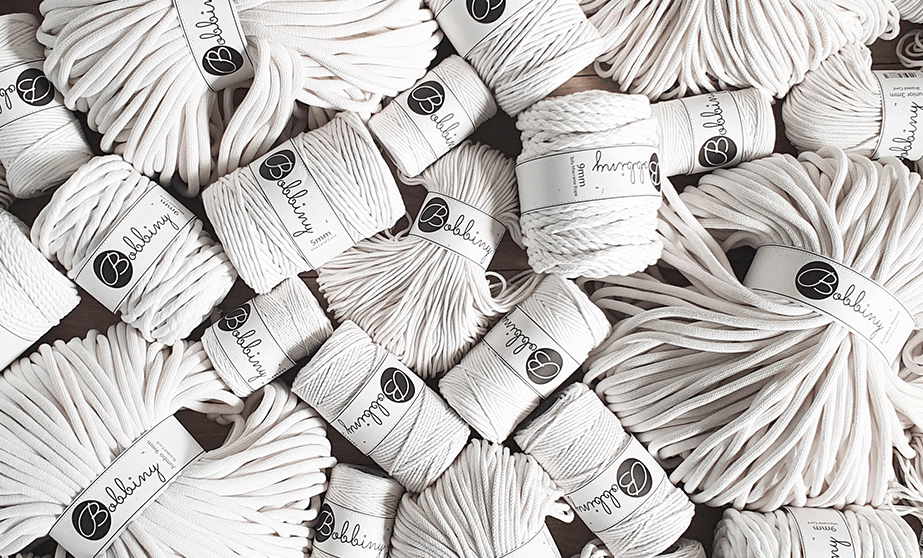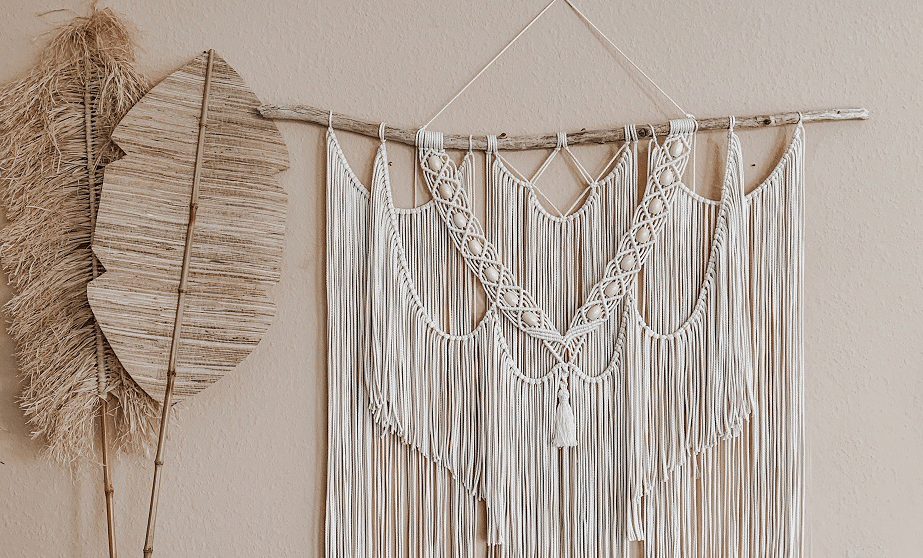Article: Which yarn for macrame? My tips and experiences

Which yarn for macrame? My tips and experiences
Macrame is a real trend and incredibly popular. This knotting technique originated in the Orient and has been practiced there for centuries. In the 1970s, macrame experienced its first major wave in Germany, and almost every living room had at least one hanging basket or macrame owl. Even though things quieted down a bit after that, the art of knotting never completely disappeared. Since the boho trend has resurfaced, macrame has been celebrating a comeback.
Which yarn should you choose?
Whether it's jewelry, dream catchers, wall hangings, coasters, or keychains – macrame lets you let your creativity run wild. But beginners, in particular, often face the question: "Which yarn is right for my project?" Macrame yarns are available in various thicknesses and materials. In this blog, I'll give you tips on which yarn to use and when, and share my own experiences.
Basics about macrame yarn
Actually, any yarn or cord is suitable for knotting macramé. There's no such thing as a perfect yarn, so find out which one works best for you.
Popular macrame yarns are:
-
Cotton
-
jute
-
hemp
-
sisal
If you want to knot a macrame for outdoor use, you should use yarn materials such as nylon.
Cotton yarns – the macrame evergreen
Cotton yarns are most commonly used in macramé. They are available in a variety of styles and are suitable for many projects.
Cotton yarn is available in:
-
Braided
-
Twisted (single twisted)
-
3-ply (triple twisted)
Braided yarn
Braided yarn is often woven around a white cotton core, which makes it harder to unravel. I find that braided yarn is the easiest to knot and the knots turn out particularly neat. It's also quick to work with, without having to worry about unraveling.
One disadvantage is that braided yarn is difficult to comb out, which is often important for the boho look. For example, the braided yarn from Bobbiny, which you can find in my shop, is not combable.
There are exceptions, however: The yarns from the mahina collection are also easy to knot and comb out more easily. I recommend using a fine comb for combing out the ends, although this is a bit more laborious than with twisted yarn.
My personal favorite is the braided yarn from Bobbiny in different thicknesses: 1.5 mm, 3 mm, 5 mm and 9 mm as well as the mahina collection with 2 mm, 3 mm and 4 mm.
I use it to knot, among other things:
-
Hanging baskets (Bobbiny yarn 3 mm braided)
-
Vases and lanterns (mahina yarn 2 mm braided)
-
Wall hangings (mahina yarn 4 mm braided)
Twisted yarn
The twisted yarn is made from several strands of fabric twisted together. It's very soft and easy to comb out. If you want to knot a macrame with lots of fringe, this yarn is ideal.
However, as a beginner, it can happen that the knots unravel and are not as neat as with braided yarn.
Possible projects with twisted yarn are:
-
Small key ring (Bobbiny 1.5 mm twisted)
-
Large keychain (Bobbiny 3 mm twisted)
-
Bookmark (Bobbiny 1.5 mm twisted)
-
Earrings (Bobbiny 1.5 mm twisted)
-
Pacifier chains (Bobbiny 1.5 mm twisted)
-
Teething rings (Bobbiny 1.5 mm twisted)
3-ply yarn
The 3-ply yarn is divided into three parts that are twisted together. It is very robust and easy to comb out. However, the knots are not as detailed as with twisted yarn.
In our shop you will find 3-ply yarn from Bobbiny in 3mm, 5mm and 9mm
Projects you can implement with it are:
-
Swing (Bobbiny 5 mm 3-ply)
-
Wall hanging (Bobbiny 3mm-5mm 3-ply)
Conclusion
This blog is based on my own experiences. What works for me may not necessarily work for you. I encourage you to experiment with different yarn weights and types to find what works best for you.
You can find all the yarns from this post in various colors in my shop. If you have any questions or need tips, I'm happy to help!
Have fun tying knots!
xx Nina from mahina


